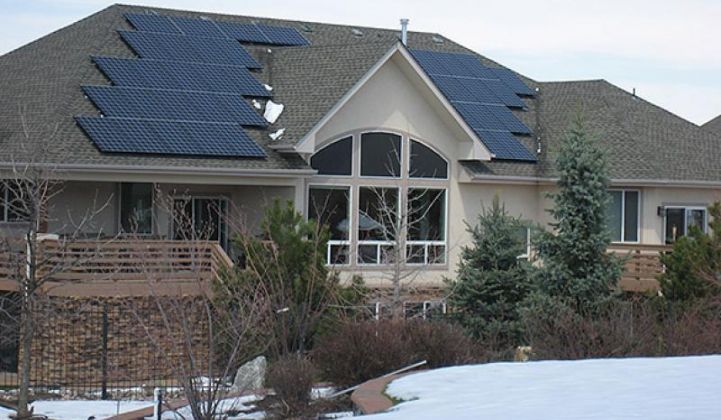New analysis shows that Sunrun’s direct business now leads in residential solar installations.
According to data from Wood Mackenzie Power & Renewables, Sunrun’s year-to-date installations through its vertically integrated channel — where the company handles financing, sales, marketing and installations — narrowly overtook Tesla-owned SolarCity installations through Q3 2018. While Sunrun’s direct business installed 163 megawatts in the first three quarters of the year, SolarCity installed 156 megawatts.
Last year Sunrun’s combined business, which includes direct installations and Sunrun-financed installations through channel partners like Trinity Solar Power and Solcius, outranked SolarCity. WoodMac’s new figures show that, for the first time, Sunrun’s direct business has also exceeded SolarCity installations.
Though Sunrun’s edge is marginal, WoodMac senior solar analyst Allison Mond expects the growth trend to continue. The data also suggests that large national installers may be ready for a resurgence.
“This is going against the trend of the strength of the long tail,” said Mond. “It’s showing that a large national installer actually can continue to grow and that it’s not just losing market share to smaller companies, or it doesn’t have to necessarily rely on its channel business to grow.”
In recent years, as large installers like SolarCity and Vivint faltered, the long tail of residential installers reaped the rewards. (Vivint has made a bit of a comeback in recent quarters.)
“Installation volume has been picked up by the long tail, mostly by the large regional players,” said Mond. “It’s created a lot of opportunities for these companies that there aren’t these huge installation behemoths in the market anymore.”
Though Sunrun has grown, its market share to date in 2018 sits at 9.5 percent according to WoodMac. Tesla/SolarCity claims 9.1 percent. Both numbers are small compared to the 33.5 percent share that SolarCity once enjoyed.
Sunrun said in Q3 it added 13,000 customers and 100 megawatts of deployments, the company’s highest quarterly volume in history. Its direct business is growing 50 percent year-over-year.
In a Q3 2018 earnings call, Sunrun CEO Lynn Jurich said Sunrun’s success “means we are more attractive to large national partners like big-box retailers and homebuilders, we have supply chain advantages that we are seeing play out today with batteries, and we are engaged with utilities to design the energy system of the future.”
The future is murkier for Tesla’s residential solar business.
In response to questions about Tesla’s market share, the company pointed to past comments from Senior Vice President of Energy Sanjay Shah, who said in a November Bloomberg piece that “we don’t want to grow the business just by chasing volume." In addition, CTO JB Straubel told USA Today in July that Tesla is “focused intently on the customer experience, not on having a higher market share.”
Straubel said the company was “looking at the bigger picture.”
Not long after Tesla acquired SolarCity, the company announced it would end door-to-door sales. In June of this year, the company ended its partnership to sell at Home Depot stores. Now you can only buy Tesla solar products in its stores and online.
“That’s a pretty unproven way to sell residential solar,” said Mond. “Based on that, I’m expecting to see their installation volumes either continue to decline or at least stay flat.”
Sunrun, on the other hand, continues to employ an “all-of-the-above approach to sales” said Mond, working with retailers, door-to-door, referrals and more. The company has also stuck with leases or power-purchase agreements, while Tesla has increasingly moved toward customer-owned systems financed with cash or loans.
Tesla said shuttering conventional and more expensive sales channels, like through Home Depot and door-to-door, plus a reduction in marketing expenses, has allowed the company to reduce its system cost by 10 to 15 percent. That is then passed through to customers. In November, the company cut prices for its systems by $3,000 to $5,000, for the average customer.
According to Mond, that price drop is Tesla’s first indication in a long time that it still has a stake in its residential solar business. It's possible that Tesla is actually now making a higher margin on the systems it sells because of cuts to sales channels and customer-acquisition costs.
Though SolarCity has maintained its No. 1 market share in California, Mond said it’s unclear what will happen in other markets.
“It seems like every move they’ve made since being acquired by Tesla shows they are not focused on the residential solar business,” said Mond. “If their goal is to grow their residential business, they’re not succeeding.”




